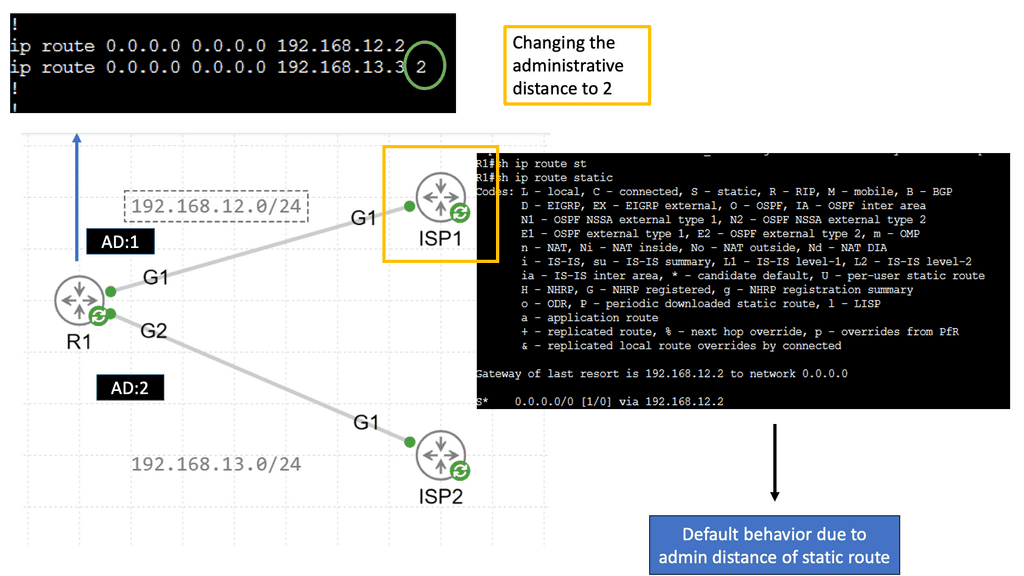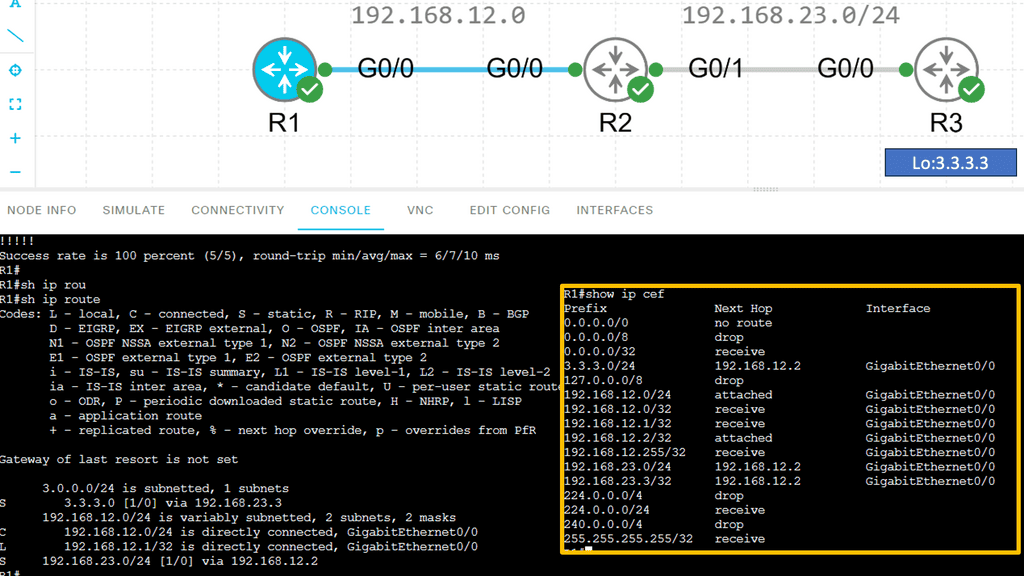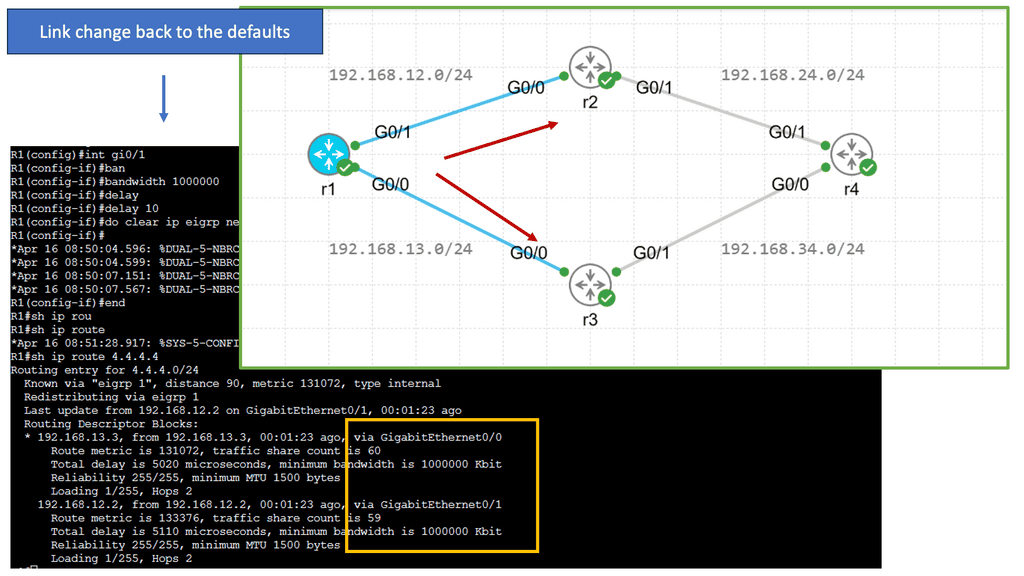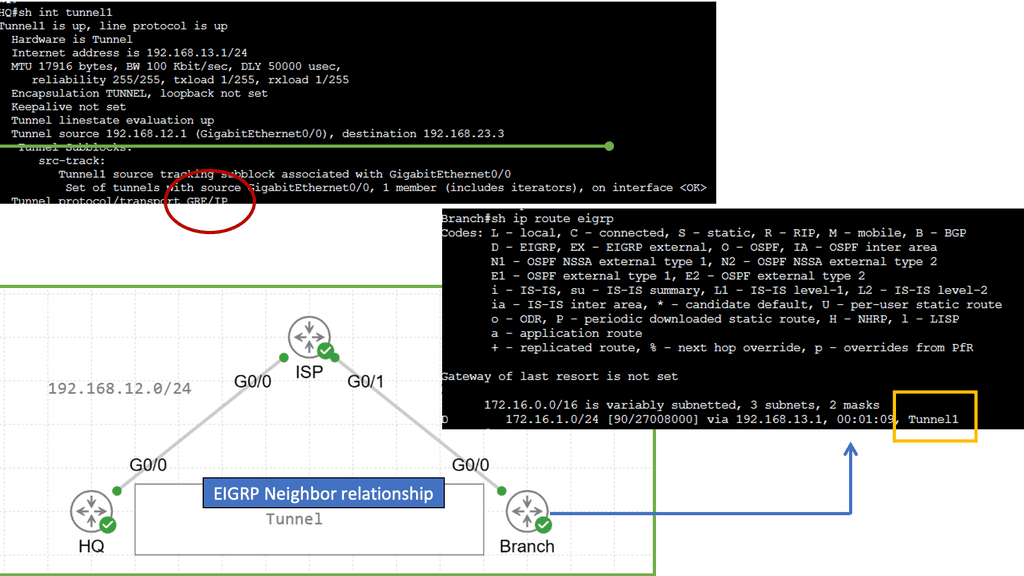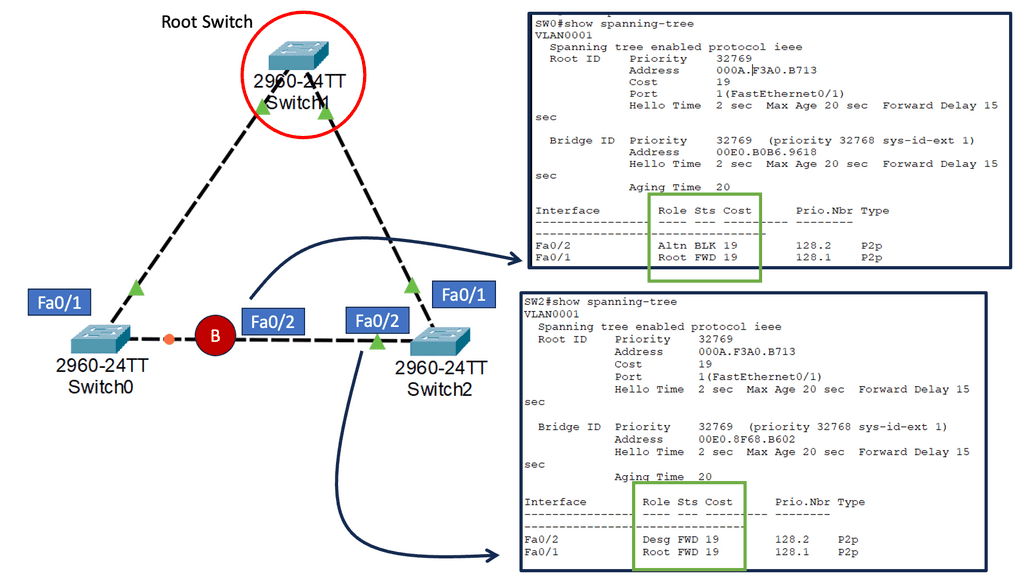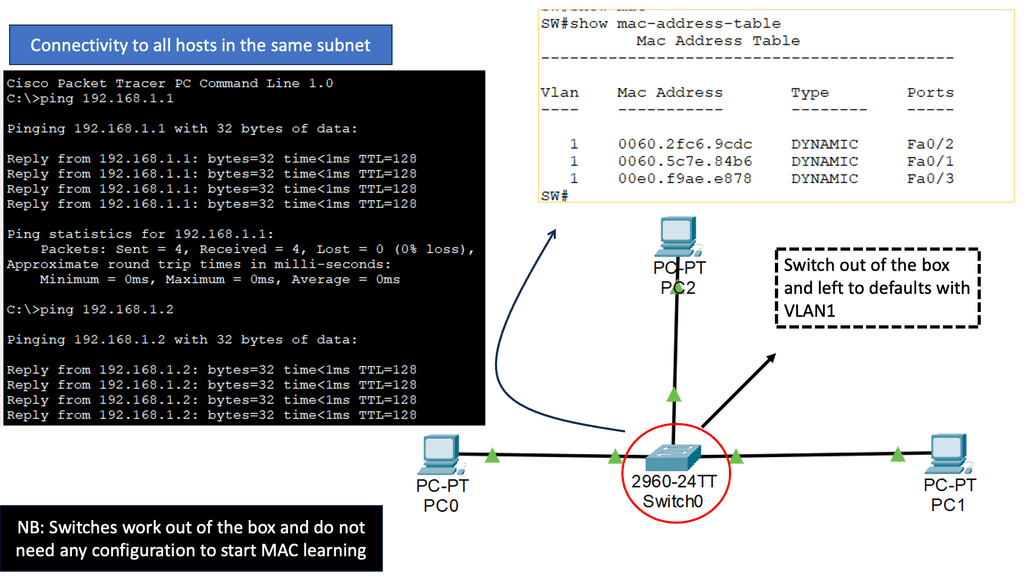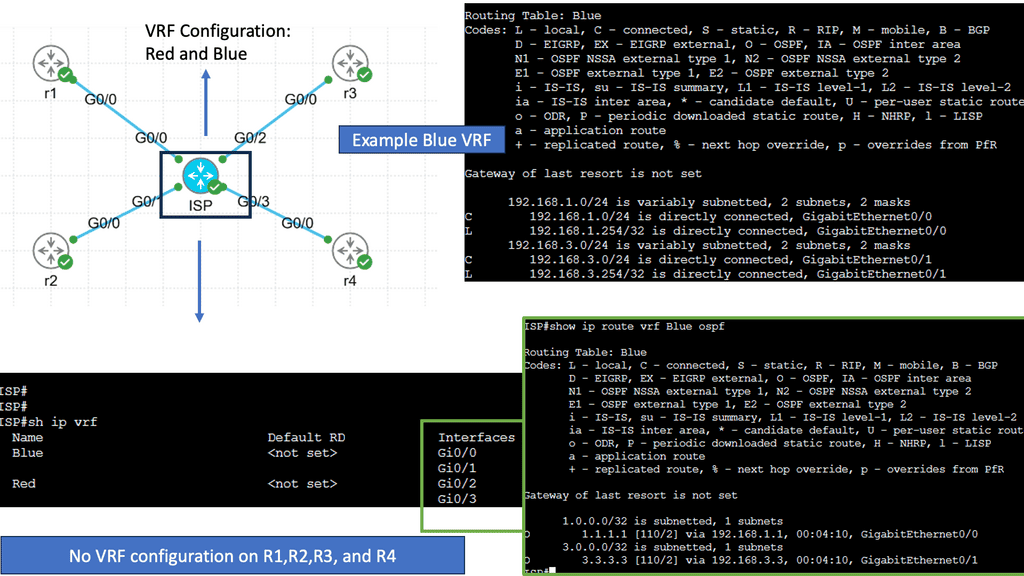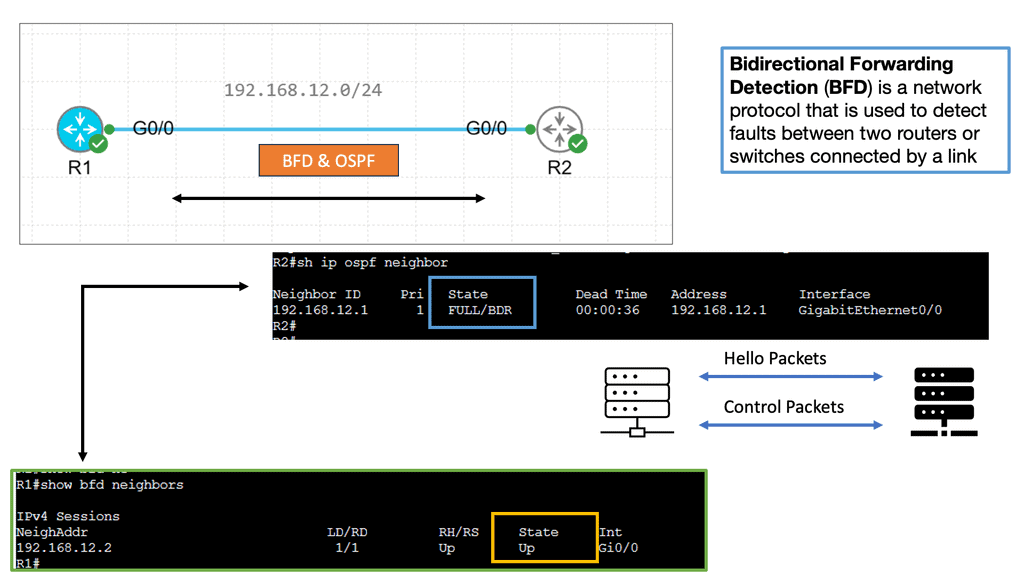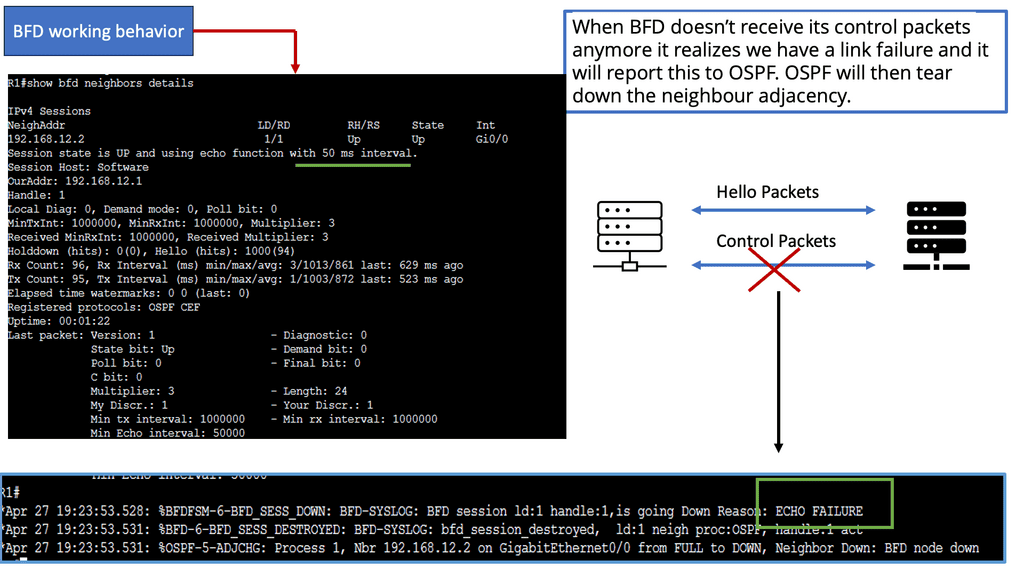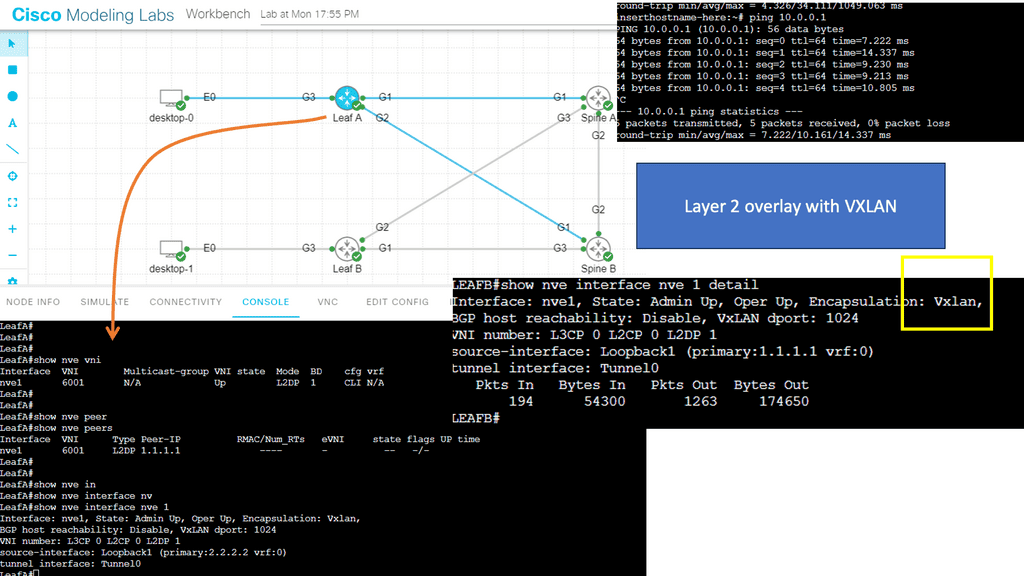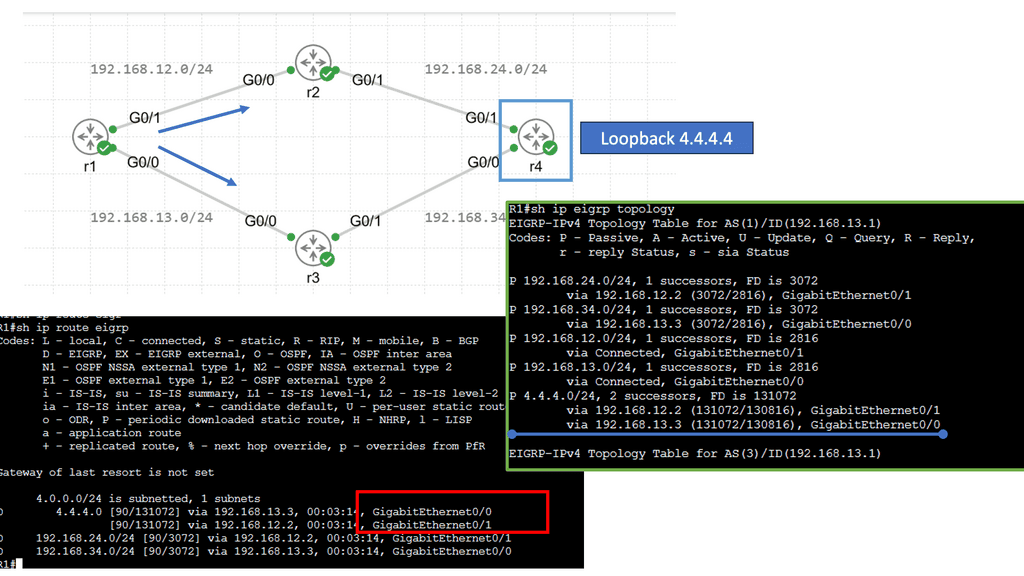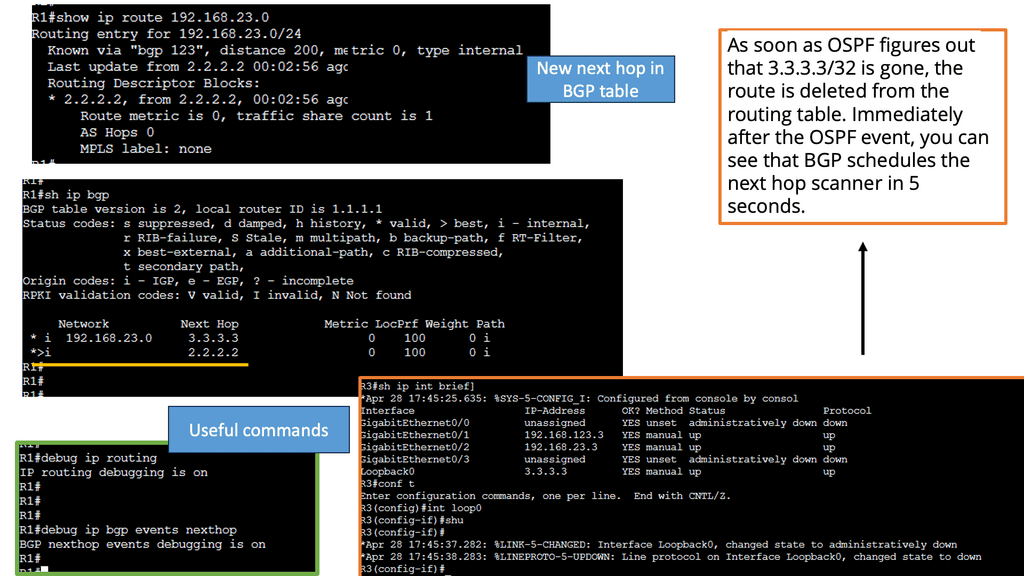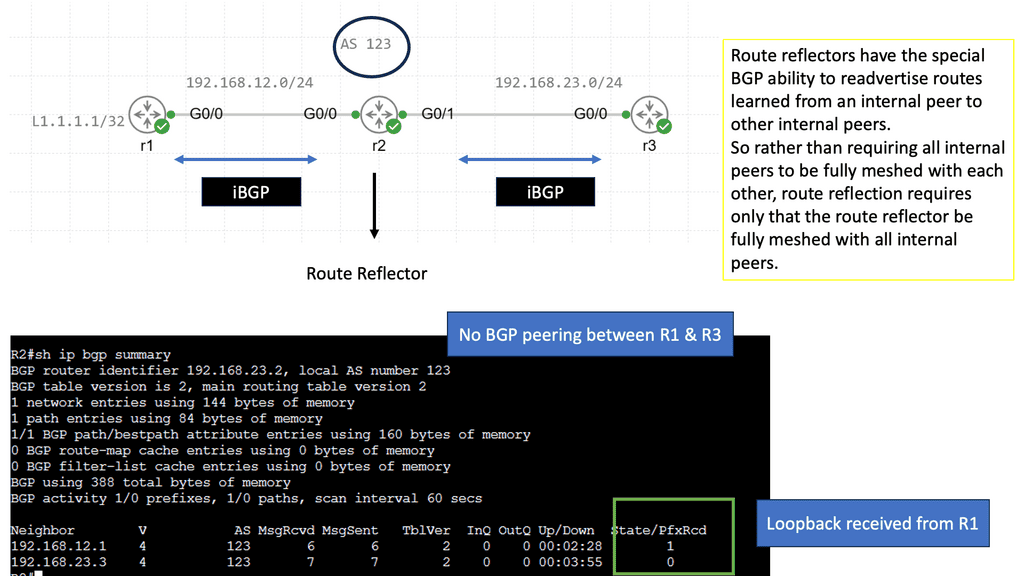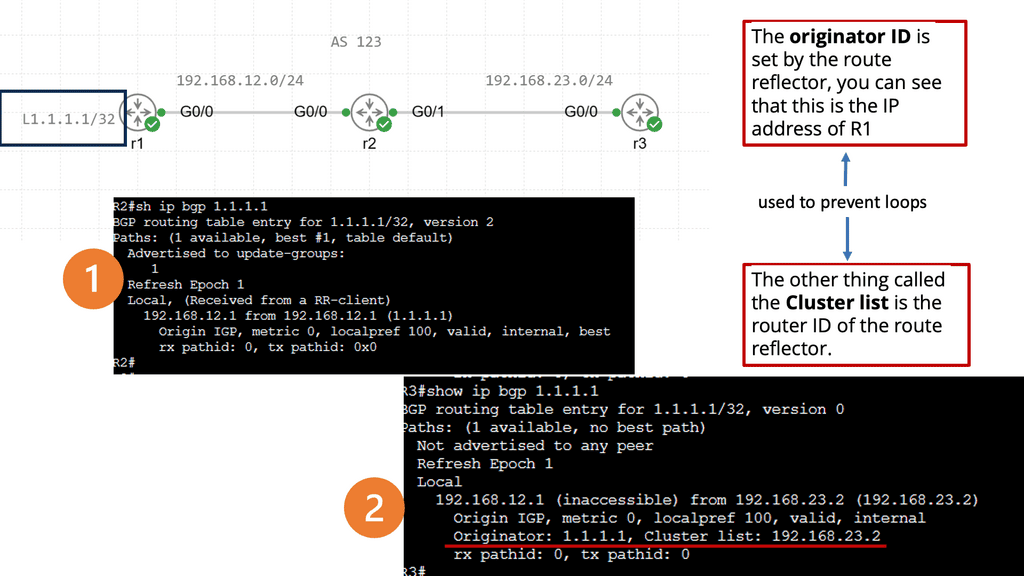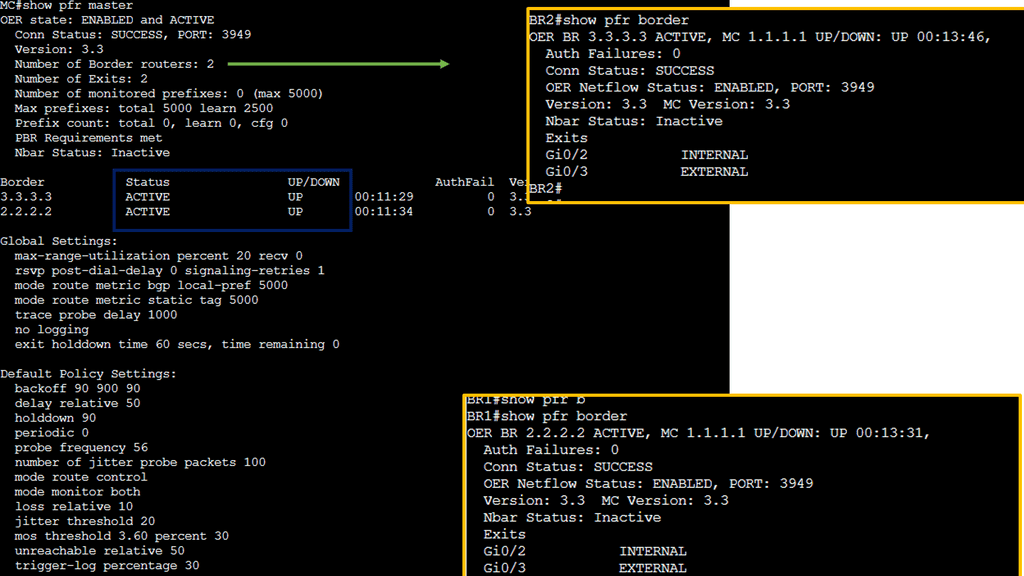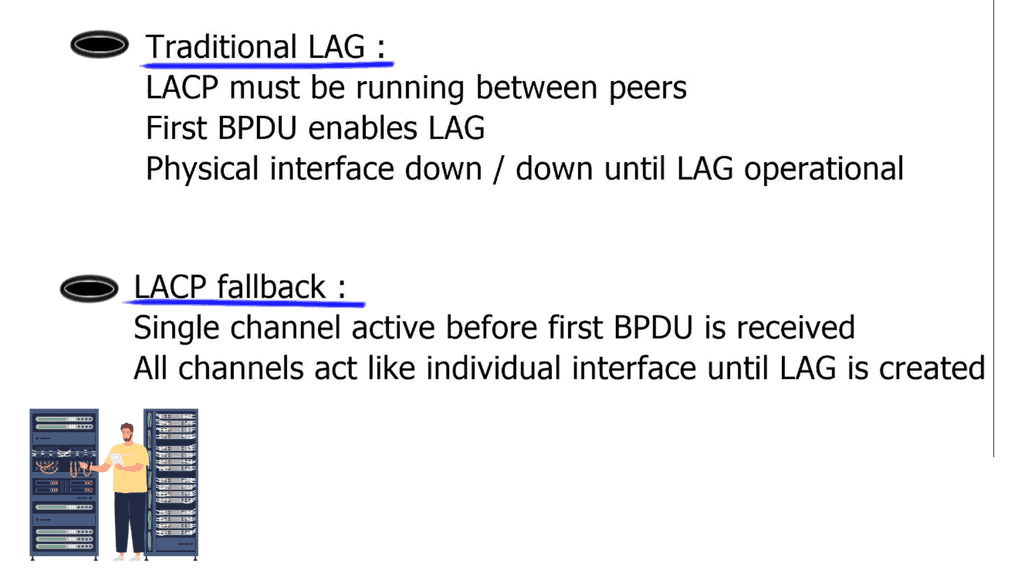Optimal Layer 3 Forwarding
Layer 3 forwarding is crucial in ensuring efficient and seamless network data transmission. Optimal Layer 3 forwarding, in particular, is an essential aspect of network architecture that enables the efficient routing of data packets across networks. In this blog post, we will explore the significance of optimal Layer 3 forwarding and its impact on network performance and reliability.
Layer 3 forwarding directs network traffic based on its network layer (IP) address. It operates at the network layer of the OSI model, making it responsible for routing data packets across different networks. Layer 3 forwarding involves analyzing the destination IP address of incoming packets and selecting the most appropriate path for their delivery.
Enhanced Network Performance: Optimal layer 3 forwarding optimizes routing decisions, resulting in faster and more efficient data transmission. It eliminates unnecessary hops and minimizes packet loss, leading to improved network performance and reduced latency.
Scalability: With the exponential growth of network traffic, scalability becomes crucial. Optimal layer 3 forwarding enables networks to handle increasing traffic demands by efficiently distributing packets across multiple paths. This scalability ensures that networks can accommodate growing data loads without compromising on performance.
Load Balancing: Layer 3 forwarding allows for intelligent load balancing by distributing traffic evenly across available network paths. This ensures that no single path becomes overwhelmed with traffic, preventing bottlenecks and optimizing resource utilization.
Implementing Optimal Layer 3 Forwarding
Hardware and Software Considerations: Implementing optimal layer 3 forwarding requires suitable network hardware and software support. It is essential to choose routers and switches that are capable of handling the increased forwarding demands and provide advanced routing protocols.
Configuring Routing Protocols: To achieve optimal layer 3 forwarding, configuring robust routing protocols is crucial. Protocols such as OSPF (Open Shortest Path First) and BGP (Border Gateway Protocol) play a significant role in determining the best path for packet forwarding. Fine-tuning these protocols based on network requirements can greatly enhance overall network performance.
Real-World Use Cases
Data Centers:In data center environments, optimal layer 3 forwarding is essential for seamless communication between servers and networks. It enables efficient load balancing, fault tolerance, and traffic engineering, ensuring high availability and reliable data transfer.
Wide Area Networks (WAN):For organizations with geographically dispersed locations, WANs are the backbone of their communication infrastructure. Optimal layer 3 forwarding in WANs ensures efficient routing of traffic across different locations, minimizing latency and maximizing throughput.Matt Conran
Highlights: Optimal Layer 3 Forwarding
Enhance Layer 3 Forwarding
What is Routing?
Routing is like a network’s GPS. It involves directing data packets from their source to their destination across multiple networks. Think of it as the process of determining the best possible path for data to travel. Routers, the essential devices responsible for routing, use various algorithms and protocols to make intelligent decisions about where to send data packets next.
Routing involves determining the most appropriate path for data packets to reach their destination. The next hop refers to the immediate network device to which a packet should be forwarded before reaching its final destination.
Administrative distance can be defined as a measure of the trustworthiness of a particular routing information source. It is a numerical value assigned to different routing protocols, indicating their level of reliability or preference. Essentially, administrative distance represents the “distance” between a router and the source of routing information, with lower values indicating higher reliability and trustworthiness.
Static routing forms the backbone of network infrastructure, providing a manual route configuration. Unlike dynamic routing protocols, which adapt to network changes automatically, static routing relies on predetermined paths. Network administrators have complete control over traffic paths by manually configuring routes in the routing table.
Load Balancing and Next Hop
In scenarios where multiple paths are available to reach a destination, load-balancing techniques come into play. Load balancing distributes the traffic across different paths, preventing congestion and maximizing network utilization. However, determining the optimal next hop becomes a challenge in load-balancing scenarios. We will explore the intricacies of load balancing and its impact on next-hop decisions.
Different load-balancing strategies exist, each with its approach to selecting the next hop. Dynamic load balancing algorithms adaptively choose the next hop based on real-time metrics like response time and server load, such as Least Response Time (LRT) and Weighted Least Loaded (WLL). On the other hand, static load balancing algorithms, like Round Robin and Static Weighted, distribute traffic evenly without considering dynamic factors.
Understanding Cisco CEF
Cisco CEF is a high-performance, scalable packet-switching technology that operates at Layer 3 of the OSI model. Unlike traditional routing protocols, CEF utilizes a Forwarding Information Base (FIB) and an Adjacency Table (ADJ) to expedite the forwarding process. By maintaining a precomputed forwarding table, CEF minimizes the need for route lookups, resulting in superior performance.
Dynamic Routing Protocols and Next Hop Selection
Dynamic routing protocols, such as OSPF (Open Shortest Path First) and BGP (Border Gateway Protocol), play a vital role in modern networks. These protocols dynamically exchange routing information among network devices, enabling efficient adaptation to network changes. Next-hop selection in dynamic routing protocols involves considering factors like path cost, network congestion, and link reliability. This section will provide insights into how dynamic routing protocols influence next-hop decisions.
EIGRP (Enhanced Interior Gateway Routing Protocol) is a dynamic routing protocol widely used in enterprise networks. Load balancing with EIGRP involves distributing traffic across multiple paths to prevent congestion and ensure optimal utilization of available links. By intelligently spreading the load, EIGRP load balancing enhances network performance and enables efficient utilization of network resources.
Policy-Based Routing and Next Hop Manipulation
Policy-based routing allows network administrators to customize routing decisions based on specific criteria. It provides granular control over next-hop selection, enabling the implementation of complex routing policies. We will explore the concept of policy-based routing and how it offers flexibility in manipulating next-hop decisions to meet specific requirements.
GRE and Next Hops
Generic Routing Encapsulation (GRE) is a tunneling protocol that enables the encapsulation of various network protocols within IP packets. It provides a flexible and scalable solution for deploying virtual private networks (VPNs) and connecting disparate networks over an existing IP infrastructure. By encapsulating multiple protocol types, GRE allows for seamless network communication, regardless of their underlying technologies. Notice the next hop below is the tunnel interface.
Recap: The Role of Switching
While routing deals with data flow between networks, switching comes into play within a single network. Switches serve as the traffic managers within a local area network (LAN). They connect devices, such as computers, printers, and servers, allowing them to communicate with one another. Switches receive incoming data packets and use MAC addresses to determine which device the data should be forwarded to. This efficient and direct communication within a network makes switching so critical.
VLAN performance challenges can arise from various factors. One common issue is VLAN congestion, which occurs when multiple VLANs compete for limited network resources. This congestion can lead to increased latency, packet loss, and degraded network performance. Additionally, VLAN misconfigurations, such as improper VLAN tagging or overlapping IP address ranges, can also impact performance.
Recap: The Role of Segmentation
Segmentation is dividing a network into smaller, isolated segments or subnets. Each subnet operates independently, with its own set of rules and configurations. This division allows for better control and management of network traffic, leading to improved performance and security.
VLANs operate at the OSI model’s data link layer (Layer 2). They use switch technology to create separate broadcast domains within a network, enabling traffic isolation and control. VLANs can be configured based on department, function, or security requirements.
Understanding Virtual Routing and Forwarding
Virtual Routing and Forwarding, also known as VRF, is a technology that allows multiple virtual routing tables to coexist within a single physical router or switch. Each VRF functions as an independent entity with its routing table, forwarding decisions, and network interfaces. By separating the routing instances, VRF enables network administrators to create virtual networks that are isolated and independent from each other.
VRF offers several notable advantages in network design and management. Firstly, it enhances network security by creating logical boundaries between virtual networks. This isolation prevents unauthorized access and potential security breaches. Secondly, VRF simplifies network management by allowing administrators to implement customized routing policies for each virtual network. This flexibility enables efficient traffic engineering and optimization. Lastly, VRF facilitates network scalability as it enables the seamless integration of new virtual networks without disrupting existing ones.
Applications of Virtual Routing and Forwarding
The applications of VRF extend across various networking scenarios. One everyday use case is in multi-tenant environments like data centers or service provider networks. VRF enables different tenants to have their isolated networks while sharing the same physical infrastructure. VRF is also valuable in enterprise networks, which can be used to separate departments or branch offices, providing secure and efficient communication. Additionally, VRF plays a crucial role in implementing Virtual Private Networks (VPNs), allowing organizations to connect geographically dispersed networks over the internet securely.
Achieving Optimal Layer 3 Forwarding:
Optimal Layer 3 forwarding ensures that data packets are transmitted through the most efficient path, improving network performance. It minimizes packet loss, latency, and jitter, enhancing user experience. By selecting the best path, optimal Layer 3 forwarding also enables load balancing, distributing the traffic evenly across multiple links, thus preventing congestion.
One key challenge in network performance is identifying and resolving bottlenecks. These bottlenecks can occur due to congested network links, outdated hardware, or inefficient routing protocols. Organizations can optimize bandwidth utilization by conducting thorough network assessments and employing intelligent traffic management techniques, ensuring smooth data flow and reduced latency.
Understanding Layer 3 Etherchannel
Layer 3 Etherchannel, also known as Multilayer Etherchannel or Port Aggregation Protocol (PAgP), is a technology that enables the bundling of multiple physical links between switches or routers into a single logical interface. Unlike Layer 2 Etherchannel, which operates at the data link layer, Layer 3 Etherchannel operates at the network layer, allowing for the distribution of traffic across parallel links based on IP routing protocols.
Layer 3 Etherchannel offers several advantages for network administrators and organizations. Firstly, it enhances network performance by increasing available bandwidth and enabling load balancing across multiple links. This results in improved data transmission speeds and reduced congestion. Additionally, Layer 3 Etherchannel provides redundancy, ensuring uninterrupted connectivity even during link failures. Distributing traffic across multiple links enhances network resiliency and minimizes downtime.
Implementing Optimal Layer 3 Forwarding
a) Choosing the Right Routing Protocol: An appropriate routing protocol, such as OSPF, EIGRP, and BGP, is crucial for implementing optimal layer three forwarding. Routing protocols are algorithms or protocols that dictate how data packets are forwarded from one network to another. They establish the best paths for data transmission, considering network congestion, distance, and reliability.
One key area of routing protocol enhancements lies in introducing advanced metrics and load-balancing techniques. Modern routing protocols can evaluate network conditions, latency, and link bandwidth by considering factors beyond traditional metrics like hop count. This enables intelligent load balancing, distributing traffic across multiple paths to prevent congestion and maximize network efficiency.
Example Technology: BFD
Bidirectional Forwarding Detection (BFD) is a lightweight protocol designed to detect link failures quickly. It operates at the network layer and detects rapid failure between adjacent routers or devices. BFD accomplishes this by sending periodic control packets, known as BFD control packets, to monitor the status of links and detect any failures.
BFD plays a vital role in achieving rapid routing protocol convergence. By providing fast link failure detection, BFD allows routing protocols to detect and respond to failures swiftly. When a link failure is detected by BFD, it triggers routing protocols to recalculate paths and update forwarding tables, minimizing the failure’s impact on network connectivity.
b) Network Segmentation: Breaking down large networks into smaller subnets enhances routing efficiency and reduces network complexity. By dividing the network into smaller segments, managing and controlling the data flow becomes easier. Each segment can have its security policies, access controls, and monitoring mechanisms. Segmentation improves network performance by reducing congestion and optimizing data flow. It allows organizations to prioritize critical traffic and allocate resources effectively.
Example: Segmentation with VXLAN
VXLAN is a groundbreaking technology that addresses the limitations of traditional VLANs. It provides a scalable solution for network segmentation by leveraging overlay networks. VXLAN encapsulates Layer 2 Ethernet frames in Layer 3 UDP packets, enabling the creation of virtual Layer 2 networks over an existing Layer 3 infrastructure. This allows for greater flexibility, improved scalability, and simplified network management.
c) Traffic Engineering: Network operators can further optimize layer three forwarding by leveraging traffic engineering techniques, such as MPLS or segment routing. Network traffic engineering involves the strategic management and control of network traffic flow. It encompasses various techniques and methodologies to optimize network utilization and enhance user experience. Directing traffic intelligently aims to minimize congestion, reduce latency, and improve overall network performance.
– Traffic Shaping: This technique regulates network traffic flow to prevent congestion and ensure a fair bandwidth distribution. By prioritizing certain types of traffic, such as real-time applications or critical data, traffic shaping can effectively optimize network resources.
– Load Balancing: Load balancing distributes network traffic across multiple paths or servers, evenly distributing the workload and preventing bottlenecks. This technique improves network performance, increases scalability, and enhances fault tolerance.
Implementing Quality of Service (QoS) Policies
Implementing quality of service (QoS) policies is essential to prioritizing critical applications and ensuring optimal user experience. QoS allows network administrators to allocate network resources based on application requirements, guaranteeing a minimum level of service for high-priority applications. Organizations can prevent congestion, reduce latency, and deliver consistent performance by classifying and prioritizing traffic flows.
Leveraging Load Balancing Techniques
Load Balancing: Distributing traffic across multiple paths optimizes resource utilization and prevents bottlenecks.
Load balancing is crucial in distributing network traffic across multiple servers or links, optimizing resource utilization, and preventing overload. Organizations can achieve better network performance, fault tolerance, and enhanced scalability by implementing intelligent load-balancing algorithms. Load balancing techniques, such as round-robin, least connections, or weighted distribution, ensure efficient utilization of network resources.
Example: EIGRP configuration
EIGRP is an advanced distance-vector routing protocol developed by Cisco Systems. It is known for its fast convergence, efficient bandwidth use, and support for IPv4 and IPv6 networks. Unlike traditional distance-vector protocols, EIGRP utilizes a more sophisticated Diffusing Update Algorithm (DUAL) to determine the best path to a destination. This enables networks to adapt quickly to changes and ensures optimal routing efficiency.
EIGRP load balancing enables routers to distribute traffic among multiple paths, maximizing the utilization of available resources. It is achieved through the equal-cost multipath (ECMP) mechanism, which allows for the simultaneous use of various routes with equal metrics. By leveraging ECMP, EIGRP load balancing enhances network reliability, minimizes congestion, and improves overall performance
Advanced Topic
Strategies for Achieving Network Scalability:
Optimal layer three forwarding allows networks to scale seamlessly, accommodating growing traffic demands while maintaining high performance. Scalable networks offer numerous benefits to businesses and organizations. Firstly, they provide flexibility, allowing the network to adapt to changing requirements and accommodate growth without major disruptions. Scalable networks also enhance performance by distributing the workload efficiently, preventing congestion and ensuring smooth operations. Additionally, scalability promotes cost-efficiency as it minimizes the need for frequent infrastructure upgrades and reduces downtime.
-Scalable Network Architecture: Designing a scalable network architecture is the foundation for achieving network scalability. This involves utilizing modular components, implementing redundant systems, and employing technologies like virtualization and cloud computing.
-Bandwidth Management: Effective bandwidth management is crucial for network scalability. It involves monitoring and optimizing bandwidth usage, prioritizing critical applications, and implementing Quality of Service (QoS) mechanisms to ensure smooth data flow.
-Scalable Network Equipment: Investing in scalable network equipment is essential for long-term growth. This includes switches, routers, and access points that can handle increasing traffic and provide room for expansion.
-Load Balancing: Implementing load balancing mechanisms helps distribute network traffic evenly across multiple servers or resources. This prevents overloading of specific devices and enhances overall network performance and reliability.
Example Feature: BGP Next Hop Tracking
BGP next-hop tracking is a mechanism used to validate the reachability of the next-hop IP address. It verifies that the next hop advertised by BGP is indeed reachable, preventing potential routing issues. By continuously monitoring the next hop status, network administrators can ensure optimal routing decisions and maintain network stability.
BGP next-hop tracking is a mechanism used to validate the reachability of the next-hop IP address. It verifies that the next hop advertised by BGP is indeed reachable, preventing potential routing issues. By continuously monitoring the next hop status, network administrators can ensure optimal routing decisions and maintain network stability.
The implementation of BGP next-hop tracking offers several key benefits. First, it enhances network resilience by detecting and reacting promptly to next-hop failures. This proactive approach prevents traffic black-holing and minimizes service disruptions. Additionally, it enables efficient load balancing by accurately identifying the available next-hop options based on their reachability status.
Understanding BGP Route Reflection
At its core, BGP route reflection is a technique used to alleviate the burden of full mesh configurations within BGP networks. Traditionally, each BGP router would establish a full mesh of connections with its peers, exponentially increasing the number of sessions as the network expands. However, with route reflection, certain routers are designated as route reflectors, simplifying the mesh and reducing the required sessions.
Route reflectors act as centralized points for reflection, collecting, and disseminating routing information to other routers in the network. They maintain a separate BGP table, the reflection table, which stores all the routing information received from clients and other route reflectors. By consolidating this information, route reflectors enable efficient propagation of updates, reducing the need for full-mesh connections.
Technologies Driving Enhanced Network Scalability
The Rise of Software-Defined Networking (SDN): Software-Defined Networking (SDN) has emerged as a game-changer in network scalability. By decoupling the control plane from the data plane, SDN enables centralized network management and programmability. This approach significantly enhances network flexibility, allowing organizations to dynamically adapt to changing traffic patterns and scale their networks with ease.
Network Function Virtualization (NFV): Network Function Virtualization (NFV) complements SDN by virtualizing network services that were traditionally implemented using dedicated hardware devices. By running network functions on standard servers or cloud infrastructure, NFV eliminates the need for physical equipment, reducing costs and improving scalability. NFV empowers organizations to rapidly deploy and scale network functions such as firewalls, load balancers, and intrusion detection systems, leading to enhanced network agility.
The Emergence of Edge Computing: With the proliferation of Internet of Things (IoT) devices and real-time applications, the demand for low-latency and high-bandwidth connectivity has surged. Edge computing brings computational capabilities closer to the data source, enabling faster data processing and reduced network congestion. By leveraging edge computing technologies, organizations can achieve enhanced network scalability by offloading processing tasks from centralized data centers to edge devices.
The Power of Artificial Intelligence (AI) and Machine Learning (ML): AI and ML are revolutionizing network scalability by optimizing network performance, predicting traffic patterns, and automating network management. These technologies enable intelligent traffic routing, congestion control, and predictive scaling, ensuring that networks can dynamically adapt to changing demands. By harnessing the power of AI and ML, organizations can achieve unprecedented levels of network scalability and efficiency.
Vendor Example: Arista with Large Layer-3 Multipath
Network congestion: In complex network environments, layer 3 forwarding can lead to congestion if not correctly managed. Network administrators must carefully monitor and analyze traffic patterns to proactively address congestion issues and optimize routing decisions.
Arista EOS supports hardware for Leaf ( ToR ), Spine, and Spline data center design layers. Its wide product range supports significant layer-3 multipath ( 16 – 64-way ECMP ) with excellent optimal Layer 3-forwarding technologies. Unfortunately, multi-protocol Label Switching ( MPLS ) is limited to static MPLS labels, which could become an operational nightmare. Currently, no Fibre Channel over Ethernet ( FCoE ) support exists.
Arista supports massive Layer-2 Multipath with ( Multichassis Link aggregation ) MLAG. Validated designs with Arista Core 7508 switches ( offer 768 10GE ports ) and Arista Leaf 7050S-64 support over 1980 x 10GE server ports with 1:2,75 oversubscription. That’s a lot of 10GE ports. Do you think layer 2 domains should be designed to that scale?
Related: Before you proceed, you may find the following helpful:
Optimal Layer 3 Forwarding Key Optimal Layer 3 Forwarding Discussion Points: |
|
Back to Basics: Router operation and IP forwarding
Every IP host in a network is configured with its IP address and mask and the IP address of the default gateway. Suppose the host wants to send traffic, which, in our case, is to a destination address that does not belong to a subnet to which the host is directly attached; the host passes the packet to the default gateway, which would be a Layer 3 router.
The Role of The Default Gateway
A standard misconception is how the address of the default gateway is used. People mistakenly believe that when a packet is sent to the Layer 3 default router, the sending host sets the destination address in the IP packet as the default gateway router address. However, if this were the case, the router would consider the packet addressed to itself and not forward it any further. So why configure the default gateway’s IP address?
First, the host uses the Address Resolution Protocol (ARP) to find the specified router’s Media Access Control (MAC) address. Then, having acquired the router’s MAC address, the host sends the packets directly to it as data link unicast submissions.
Benefits of Optimal Layer 3 Forwarding:
1. Enhanced Scalability: Optimal Layer 3 forwarding allows networks to scale effectively by efficiently handling a growing number of connected devices and increasing traffic volumes. It enables seamless expansion without compromising network performance.
2. Improved Network Resilience: Optimized Layer 3 forwarding enhances network resilience by selecting the most efficient path for data packets. It enables networks to quickly adapt to network topology or link failure changes, rerouting traffic to ensure uninterrupted connectivity.
3. Better Resource Utilization: Optimal Layer 3 forwarding optimizes resource utilization by distributing traffic across multiple links. This enables efficient utilization of available network capacity, reducing the risk of bottlenecks and maximizing the network’s throughput.
4. Enhanced Security: Optimal Layer 3 forwarding contributes to network security by ensuring traffic is directed through secure paths. It also enables the implementation of firewall policies and access control lists, protecting the network from unauthorized access and potential security threats.
Implementing Optimal Layer 3 Forwarding:
To achieve optimal Layer 3 forwarding, various technologies and protocols are utilized, such as:
1. Routing Protocols: Dynamic routing protocols, such as OSPF (Open Shortest Path First) and BGP (Border Gateway Protocol), enable networks to exchange routing information automatically and determine the best path for data packets.
2. Quality of Service (QoS): QoS mechanisms prioritize network traffic, ensuring that critical applications receive the necessary bandwidth and reducing the impact of congestion.
3. Network Monitoring and Analysis: Continuous network monitoring and analysis tools provide real-time visibility into network performance, enabling administrators to identify and resolve potential issues promptly.
Arista deep buffers: Why are they important?
A vital switch table you need to be concerned with for large 3 networks is the size of Address Resolution Protocol ( ARP ) tables. When ARP tables become full, and packets are offered with the destination ( next hop ) that isn’t cached, the network will experience flooding and suffer performance problems.
Arista Spine switches have deep buffers, ideal for bursty- and latency-sensitive environments. They are also perfect when you have little knowledge of the application traffic matrix, as they can handle most types efficiently.
Finally, deep buffers are most useful in spine layers as traffic concentration occurs in these layers. If you are concerned that ToR switches do not have enough buffers, physically direct servers to chassis-based switches in the Core / Spine layer.
Knowledge Check: Cisco PfR
Understanding Cisco PfR
Cisco PfR, also known as Cisco Performance Routing, is an intelligent network optimization technology that dynamically manages traffic flows to ensure optimal performance. It combines sophisticated algorithms, real-time monitoring, and path selection to intelligently route network traffic, leveraging multiple paths and network resources.
The Benefits of Cisco PfR
Enhanced Network Resilience and Redundancy
By continuously monitoring network conditions and dynamically adapting to changes, Cisco PfR ensures network resilience. It automatically reroutes traffic when network congestion, link failures, or other performance issues occur, minimizing downtime and disruptions.
Improved Application Performance
With Cisco PfR, network traffic is intelligently distributed across multiple paths based on application requirements. This optimization ensures critical applications receive the necessary bandwidth and low latency, enhancing the overall user experience.
Cost-Efficient Bandwidth Utilization
By intelligently distributing traffic across available network resources, Cisco PfR optimizes bandwidth utilization. It can dynamically choose the path with the lowest cost or least congestion, resulting in significant cost savings for organizations.
Optimal layer 3 forwarding
Every data center has some mix of layer 2 bridging and layer 3 forwardings. The design selected depends on layer 2 / layer 3 boundaries. Data centers that use MAC-over-IP usually have layer 3 boundaries on the ToR switch. While fully virtualized data centers require large layer two domains ( for VM mobility ); VLANs span Core or Spine layers.
Either of these designs can result in suboptimal traffic flow. Layer 2 forwarding in ToR switches and layer 3 forwarding in Core may result in servers in different VLANs connected to the same ToR switches being hairpinned to the closest Layer 3 switch.
Solutions that offer optimal Layer 3 forwarding in the data center were available. These may include stacking ToR switches, architectures that present the whole fabric as a single layer 3 elements ( Juniper QFabric ), and controller-based architectures (NEC’s Programmable Flow ). While these solutions may suffice for some business requirements, they don’t have optimal Layer 3 forward across the whole data center while using sets of independent devices.
Arista Virtual ARP does this. All ToR switches share the same IP and MAC with a common VLAN. Configuration involves the same first-hop gateway IP address on a VLAN for all ToR switches and mapping the MAC address to the configured shared IP address. The design ensures optimal Layer 3 forwarding between two ToR endpoints and optimal inbound traffic forwarding.

Load balancing enhancements
Arista 7150 is an ultra-low latency 10GE switch ( 350 – 380 ns ). It offers load-balancing enhancements other than the standard 5-tuple mechanism. Arista supports new load-balancing profiles. Load-balancing profiles allow you to decide what bit and byte of the packet you want to use as the hash for the load-balancing mechanism—offering more scope and granularity than the traditional 5-tuple mechanism.
LACP fallback
With traditional Link Aggregation ( LAG ), LAG is enabled after receiving the first LACP packet. This is because the physical interfaces are not operational and are down / down before receiving LACP packets. This is viable and perfectly OK unless you need auto-provisioning. What does LACP fallback mean?
If you don’t receive an LACP packet and the LACP fallback is configured, one of the links will still become active and will be UP / UP. Continue using the Bridge Protocol Data Unit ( BPDU ) guard on those ports, as you don’t want a switch to bridge between two ports, create a forwarding loop.
Direct server return
7050 series supports Direct Server Return. The load balancer in the forwarding path does not do NAT. Implementation includes configuring VIP on the load balancer’s outside IP and the internal servers’ loopback. It is essential not to configure the same IP address on server LAN interfaces, as ARP replies will clash. The load balancer sends the packet unmodified to the server, and the server sends it straight to the client.
Requires layer 2 between the load balancer and servers; load balancer needs to use MAC address between the load balancer and servers. It is possible to use IP called Direct Server Return IP-in-IP. Requires any layer 3 connectivity between the load balancer and servers.
Arista 7050 IP-in-IP Tunnel supports essential load balancing, so one can save the cost of not buying an external load-balancing device. However, it’s a scaled-down model, and you don’t get the advanced features you might have with Citrix or F5 load balancers.
Link flap detection
Networks have a variety of link flaps. Networks can experience fast and regular flapping; sometimes, you get irregular flapping. Arista has a generic mechanism to detect flaps so you can create flap profiles that offer more granularity to flap management. Flap profiles can be configured on individual interfaces or globally. It is possible to have multiple profiles on one interface.
Detecting failed servers
The problem is when we have scale-out applications, and you need to detect server failures. When no load balancer appliance exists, this has to be with application-level keepalives or, even worse, Transmission Control Protocol ( TCP ) timeouts. TCP timeout could take minutes. Arista uses Rapid Indication of Link Loss ( RAIL ) to improve performance. RAIL improves the convergence time of TCP-based scale-out applications.
OpenFlow support
- Support OpenFlow Protocol 1.0. Available on 7050 series.
Arista matches 750 complete entries or 1500 layer 2 match entries, which would be destination MAC addresses. They can’t match IPv6 or any ARP codes or inside ARP packets, which are part of OpenFlow 1.0. Limited support enables only VLAN or layer 3 forwardings. If matching on layer 3 forwarding, match either the source or destination IP address and rewrite the layer 2 destination address to the next hop.
Arista offers a VLAN bind mode, configuring a certain amount of VLANs belonging to OpenFlow and another set of VLANs belonging to standard Layer 3. Openflow implementation is known as “ships in the night.”
Arista also supports a monitor mode. Monitor mode is regular forwarding with OpenFlow on top of it. Instead of allowing the OpenFlow controller to forward forwarding entries, forwarding entries are programmed by traditional means via Layer 2 or Layer 3 routing protocol mechanism. OpenFlow processing is used parallel to conventional routing—openflow then copies packets to SPAN ports, offering granular monitoring capabilities.
DirectFlow
Direct Flow – I want all traffic from source A to destination A to go through the standard path, but any HTTP traffic goes via a firewall for inspection. i.e., set the output interface to X and a similar entry for the return path, and now you have traffic going to the firewall but for port 80 only.
It offers the same functionality as OpenFlow but without a central controller piece. DirectFlow can configure OpenFlow with forwarding entries through CLI or REST API and is used for Traffic Engineering ( TE ) or symmetrical ECMP. Direct Flow is easy to implement as you don’t need a controller. Just use a REST API available in EOS to configure the flows.
Optimal Layer 3 Forwarding: Final Points
Optimal Layer 3 forwarding is a critical network architecture component that significantly impacts network performance, scalability, and reliability. Efficiently routing data packets through the best paths enhances network resilience, resource utilization, and security.
Implementing optimal Layer 3 forwarding through routing protocols, QoS mechanisms, and network monitoring ensures a robust and efficient network infrastructure. Embracing this technology allows organizations to deliver seamless connectivity and a superior user experience in today’s increasingly interconnected world.
Summary: Optimal Layer 3 Forwarding
In today’s rapidly evolving networking world, achieving efficient, high-performance routing is paramount. Layer 3 forwarding is crucial in this process, enabling seamless communication between different networks. This blog post delved into optimal layer 3 forwarding, exploring its significance, benefits, and implementation strategies.
Section 1: Understanding Layer 3 Forwarding
Layer 3 forwarding, also known as IP forwarding, is the process of forwarding network packets at the network layer of the OSI model. It involves making intelligent routing decisions based on IP addresses, enabling data to travel across different networks efficiently. By understanding the fundamentals of layer 3 forwarding, we can unlock its full potential.
The Significance of Optimal Layer 3 Forwarding
Optimal layer 3 forwarding is crucial in modern networking architectures. It ensures packets are forwarded through the most efficient path, minimizing latency and maximizing throughput. With exponential data traffic growth, optimizing layer 3 forwarding becomes essential to support demanding applications and services.
Strategies for Achieving Optimal Layer 3 Forwarding
There are several strategies and techniques that network administrators can employ to achieve optimal layer 3 forwarding. These include:
1. Load Balancing: Distributing traffic across multiple paths to prevent congestion and utilize available network resources efficiently.
2. Quality of Service (QoS): Implementing QoS mechanisms to prioritize certain types of traffic, ensuring critical applications receive the necessary bandwidth and low latency.
3. Route Optimization: Utilizing advanced routing protocols and algorithms to select the most efficient paths based on real-time network conditions.
4. Network Monitoring and Analysis: Deploying monitoring tools to gain insights into network performance, identify bottlenecks, and make informed decisions for optimal forwarding.
Benefits of Optimal Layer 3 Forwarding
By implementing optimal layer 3 forwarding techniques, network administrators can unlock a range of benefits, including:
– Enhanced network performance and reduced latency, leading to improved user experience.
– Increased scalability and capacity to handle growing network demands.
– Improved utilization of network resources, resulting in cost savings.
– Better resiliency and fault tolerance, ensuring uninterrupted network connectivity.
Conclusion:
Optimal layer 3 forwarding holds the key to unlocking modern networking’s true potential. Organizations can stay at the forefront of network performance and deliver seamless connectivity to their users by understanding its significance, implementing effective strategies, and reaping its benefits.


